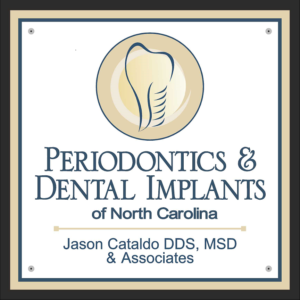
Healing is a complex process that involves the organization of cells, biochemical triggers, and extracellular matrix synthesis to repair tissue. In the past decade, periodontal regeneration has become more predictable and successful due to the adjunctive use of biologics like platelet-rich fibrin (PRF).
PRF in Durham, NC, Raleigh, NC, and Morrisville, NC, is derived from your blood to produce a fibrin clot consisting of platelets, growth factors, and cytokines. PRF treatment results in quicker healing and efficient bone and soft tissue regeneration
Platelets in your blood contain a high concentration of essential growth factors that stimulate new cell formation and form blood clots to support wound healing. PRF is generally created in an easy, three-step process that begins by collecting test tubes of blood from your arm, just like any other blood draw. Then, the tubes are spun for several minutes in a centrifuge. The top portions of the centrifuged tubes are drawn up to obtain the PRF placed over treated gum tissue to promote healing.


Platelet concentrates in oral and maxillofacial surgery have benefited from ongoing advances, including developing advanced platelet-rich fibrin (A-PRF) protocols. PRF treatment in dentistry has mainly been used to speed the revascularization of damaged tissues and enhance bone regeneration before dental implant placement. PRF includes:

Our periodontist follows one of the A-PRF protocols developed by the inventor of PRF in dentistry, Dr. Joseph Choukroun. We favor A-PRF treatment at Periodontics and Dental Implants of North Carolina because it yields a significantly higher number of growth factors and more neutrophils (type of white blood cells) than PRF, which more closely replicates the physiology and immunology of wound healing.
While standard PRF is created from the blood in the centrifuge at 2700 rpm for 12 minutes, A-PRF in Durham, NC, Raleigh, NC, and Morrisville, NC, is created in the centrifuge at 1500 rpm for 14 minutes. Research suggests the centrifugal speed and time in the latter enhance the healing and regenerative capabilities of the clot.


